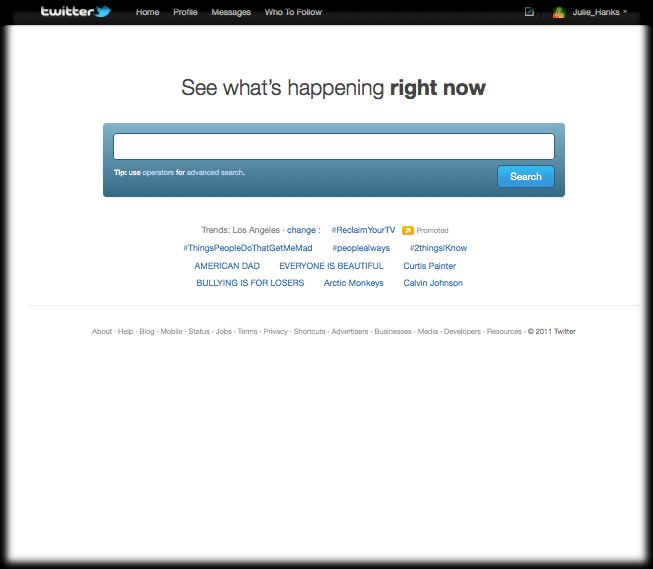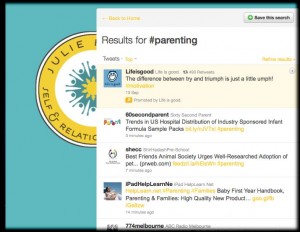 Meet Ashley Eder, LPC and her therapy dog "Angel." While I know therapists who've brought their dog into the therapy office occasionally (it wasn't necessarily "therapeutic" for colleagues or clients), Ashley is the first therapist I've met who uses a therapy dog as a purposeful tool in clinical practice.
Meet Ashley Eder, LPC and her therapy dog "Angel." While I know therapists who've brought their dog into the therapy office occasionally (it wasn't necessarily "therapeutic" for colleagues or clients), Ashley is the first therapist I've met who uses a therapy dog as a purposeful tool in clinical practice.
It makes sense that certain clients would feel at ease and find contact with a dog to be calming during therapy sessions. In her Boulder, CO private practice, Ashley specializes in body-centered psychotherapy and mindfulness interventions to treat somatic complaints, such as body image, self-harm, chronic pain, abuse recovery, and eating disorders in young adults in their teens and twenties.
In addition to her clinical practice Ashley provides counselor education, training, community building and supervises other counselors toward licensure. See how Ashley spends her day balancing family (she's a mom of one) and her clinical practice.
A Day In The Life
January 23, 2012
6:50AM
Wake up to the sound of my 15 month old son chattering to himself in his bedroom. He is currently my alarm clock, and this is an excellent arrangement when he sleeps past 6AM. I listen to him babble and do a quick first check of email to see if there is anything I need to know heading into my day.
7:00AM - 8:30AM
This is a whirlwind of play, feeding, diapering, getting dressed, and chasing a toddler around the house. My son decides today is the day he wants to learn how to climb the stairs. My husband makes us some coffee and I eat my own breakfast. We divide and conquer morning tasks like feeding our pets and unloading the dishwasher. I check email again and see I have one cancellation for this evening, and one client in crisis and requesting a phone consult today (no safety concerns). I’ll get back to both of them as soon as my son heads to daycare.
8:30AM - 9:00AM
Check in with my client in crisis over the phone. Return email to the client who needed to cancel confirming our regular appointment time next week.
9:00AM - 9:45AM
Shower and get dressed. Get my therapy dog Angel ready for work and in the car, then we head to the office. I have a short phone conversation with a colleague whose caseload I’ll be covering the next two weeks while she is out of town. I also call my son’s pediatrician to let them know that he still has the cough I brought him in for last week.
10:00AM - 10:30AM
I get settled in to see clients. This includes tidying up my office, making sure there is water in Angel’s bowl, and pulling charts for the clients I’ll see today. I have recently switched to electronic record keeping and have a personal goal of all case notes completed for the day before I leave the office. This keeps me from getting behind. I take a few minutes to sit quietly.
10:30AM - 3:00PM
I have four consecutive sessions with a half-hour break mid-way through. It’s the beginning of the school semester and my roster today reflects that students’ schedules are in flux, which means mine is too. This time flies. It is so rewarding that it’s energizing and I feel grateful for this work.
3:00PM - 4:30PM
A break. Angel and I go for a walk to stretch our legs and get some fresh air. We eat lunch by the pond outside my office where a pair of ducks is over-wintering. Angel loves to watch the ducks. Back in the office I check in with friends over Facebook and email. I return phone calls and schedule appointments with the two prospective clients who left messages this morning, and I schedule a supervision session with one of the licensure candidates I am supervising. I send a quick note to a colleague who has been a regular referral source for me lately.
4:30PM - 5:00PM
I participate in a half-hour informational interview over Skype with a college graduate from my alma mater. She contacted me via LinkedIn for advice on applying to graduate school and pursuing a career in counseling. I’m impressed by her initiative and preparation, and it feels good to help her out.
5:00PM - 6:00PM
My last session of the day. Because I have been charting all day I finish this final case note and log out of the electronic health record system by 6:00 PM sharp.
6:10PM
Pack my bag, draw the shades, lock my filing cabinet, vacuum dog hair from the carpet, leash up Angel, and head home.
6:30PM - 7:00PM
I come home where my husband and son have finished their dinners. Angel and I eat with their company and we talk about everyone’s day. My husband asks if Angel was a good therapy dog and I answer “of course.” I enjoy watching my toddler roam around the kitchen and family room. His curiosity is delightful and tomorrow we will spend the entire day together.
7:00PM - 7:30PM
Baby bedtime. We all go upstairs for the diaper change, pajamas, teeth brushing, and bedtime story.
7:30PM - 9:00PM
I finally make a dent in the pile of receipts from last year’s business expenses--time to get ready for taxes. Write a rough draft of a letter of recommendation for a client. Put the finishing touches on my resume and cover letter for an affiliate faculty teaching job I’d love to have.
9:00PM - 10:00PM
Hang out with my husband, who has also been catching up on some work that was left over from the day.
10:00PM
In bed, I skim through email and Facebook once more before going to sleep.
To learn more about Ashley Eder, LPC and her therapy dog angel, visit www.ashleyeder.com.
Join Private Practice Toolbox Facebook Group

 What is Twitter?
What is Twitter?


As healers, we genuinely like to do our work. Guiding clients through the therapy process and seeing them make progress is why we do what we do. But if you're in private practice, you know there's a lot going on in the back end and that it's crucial to run an efficient and organized business.